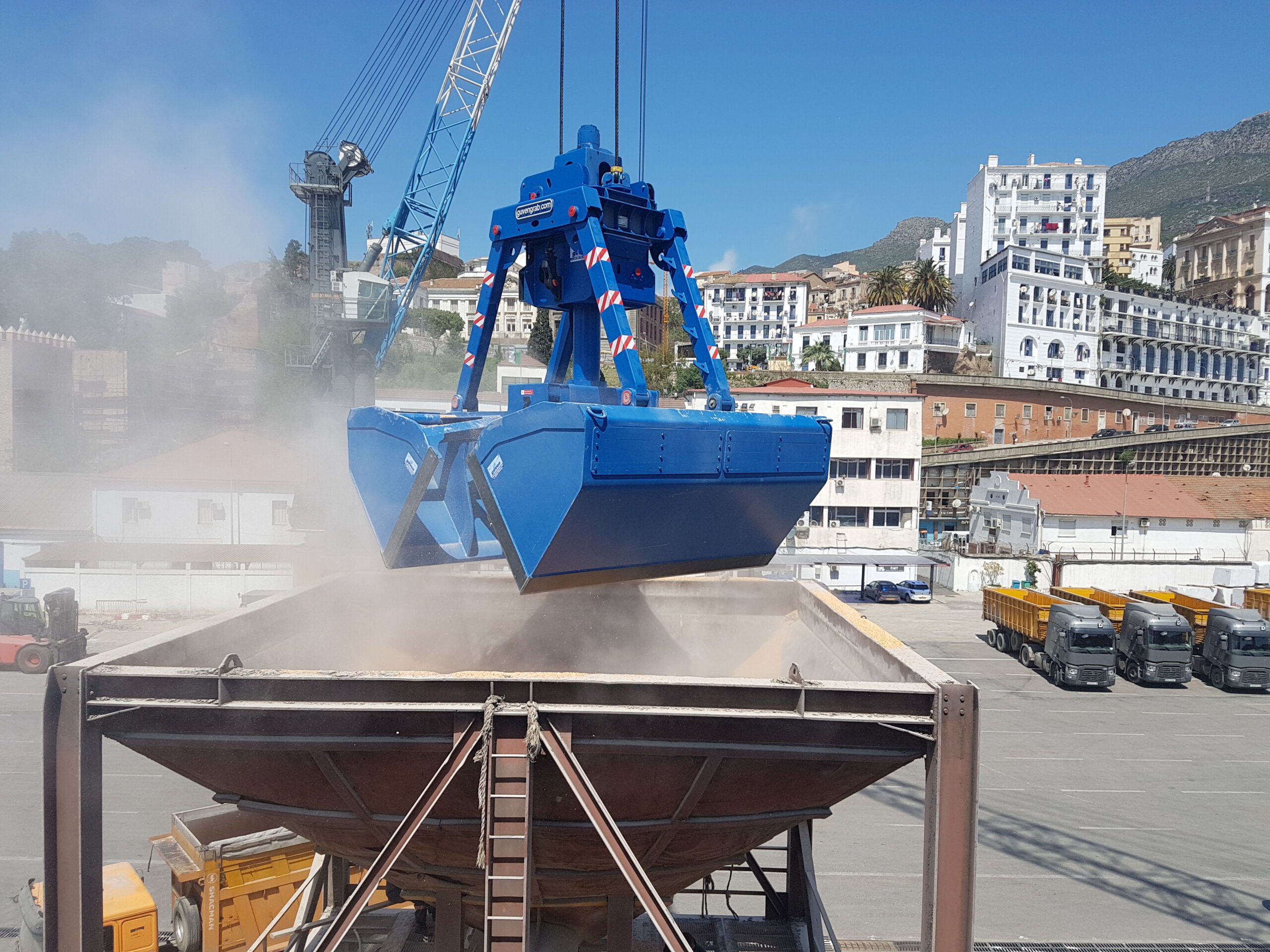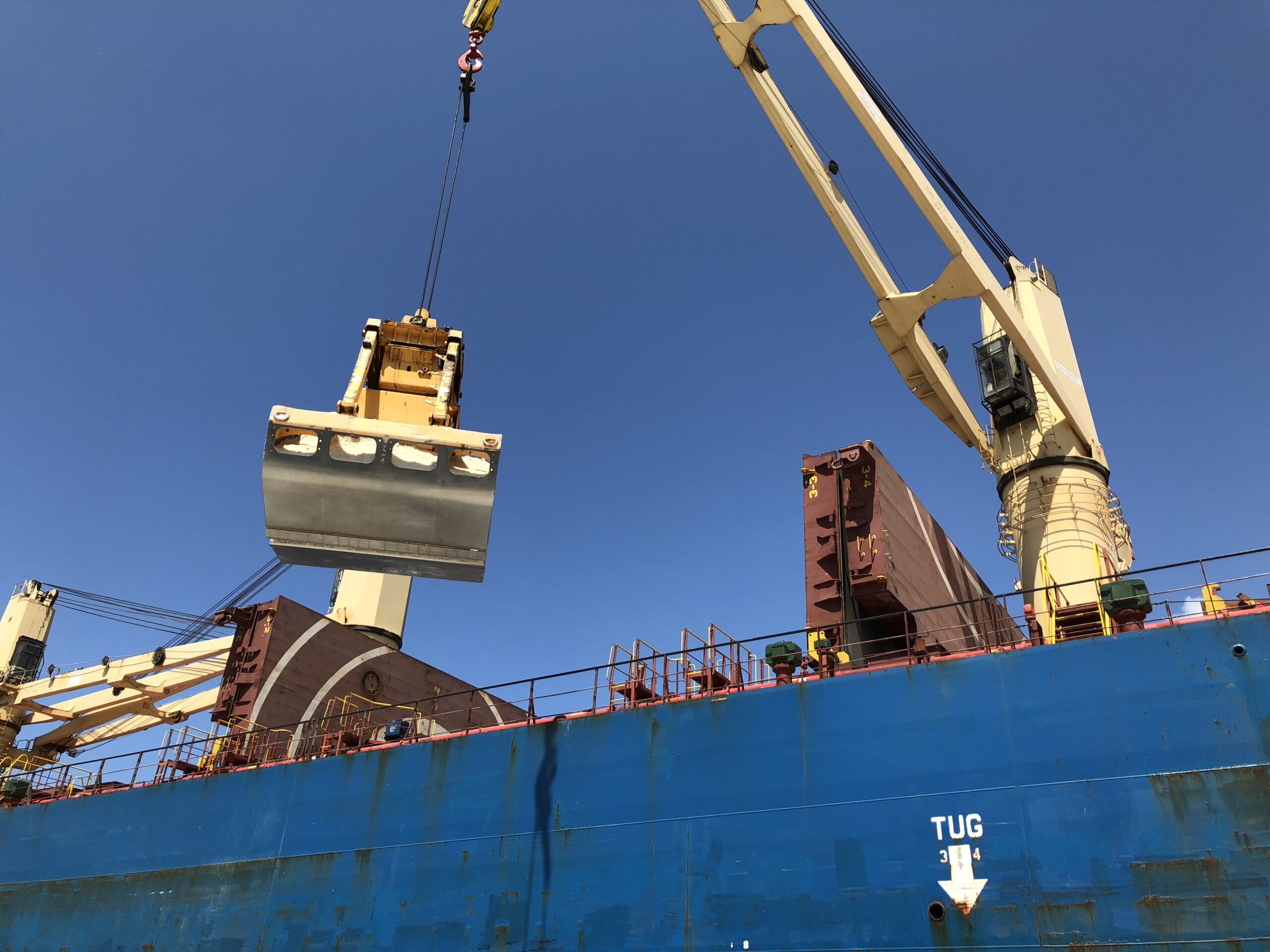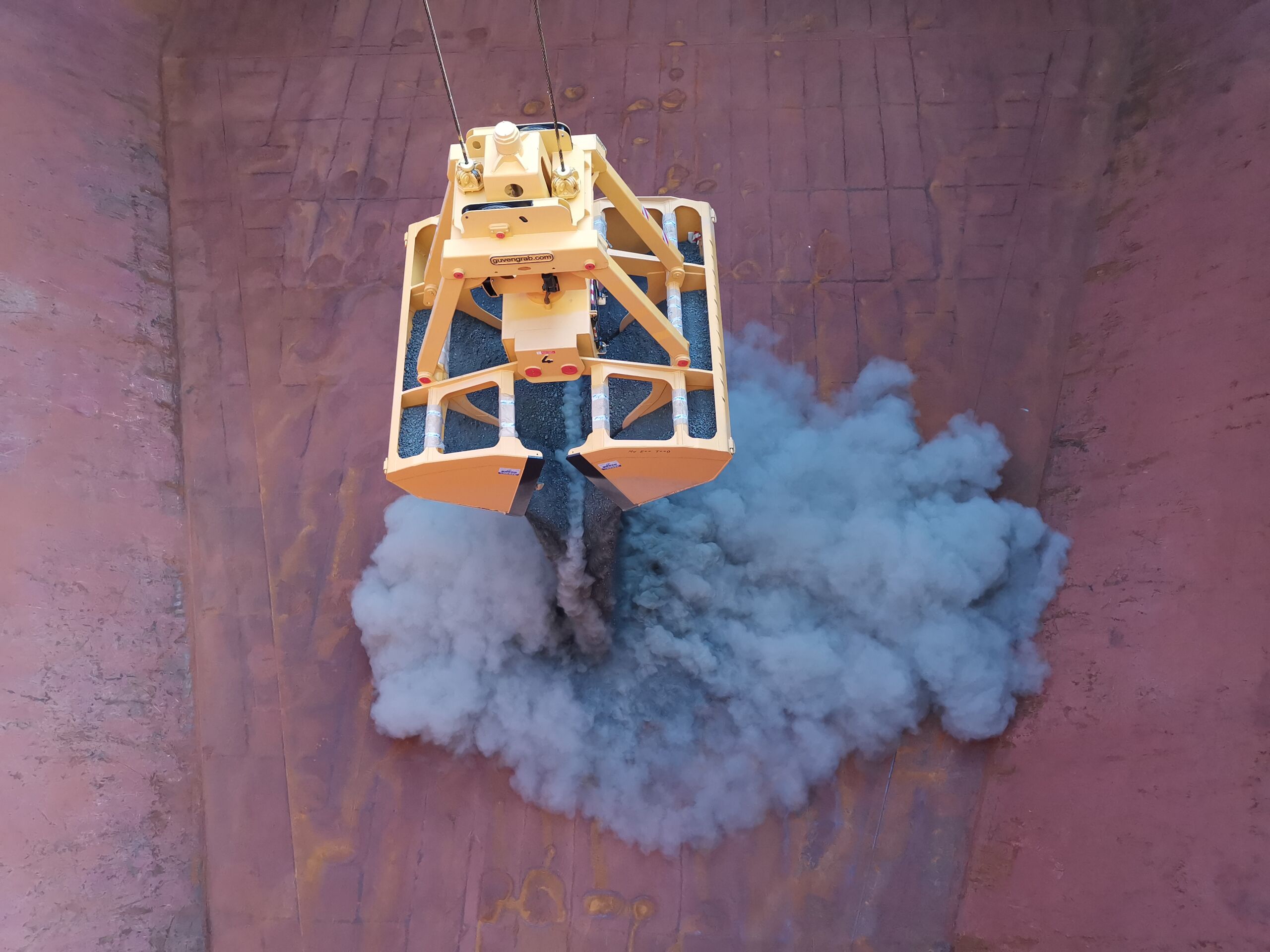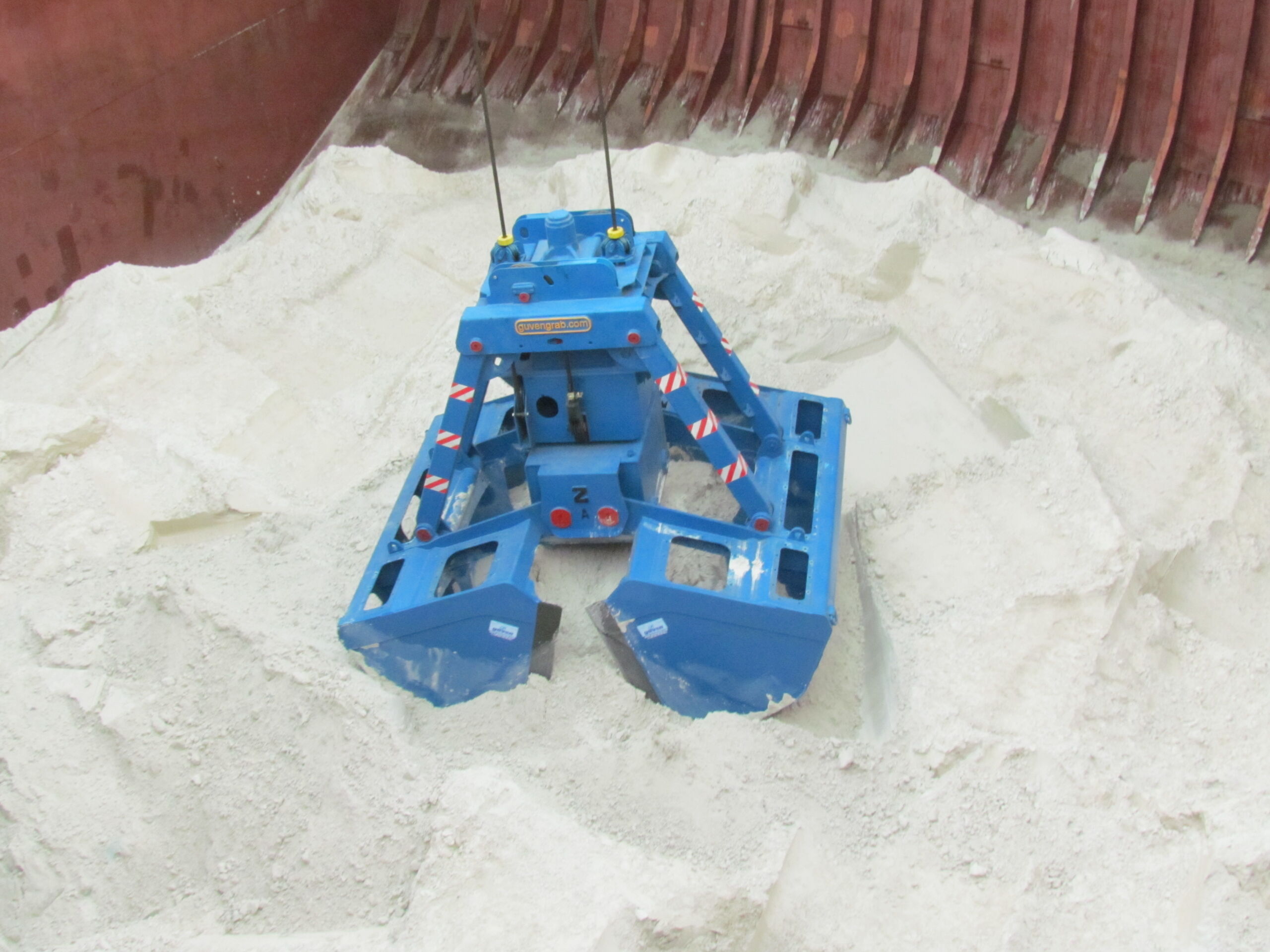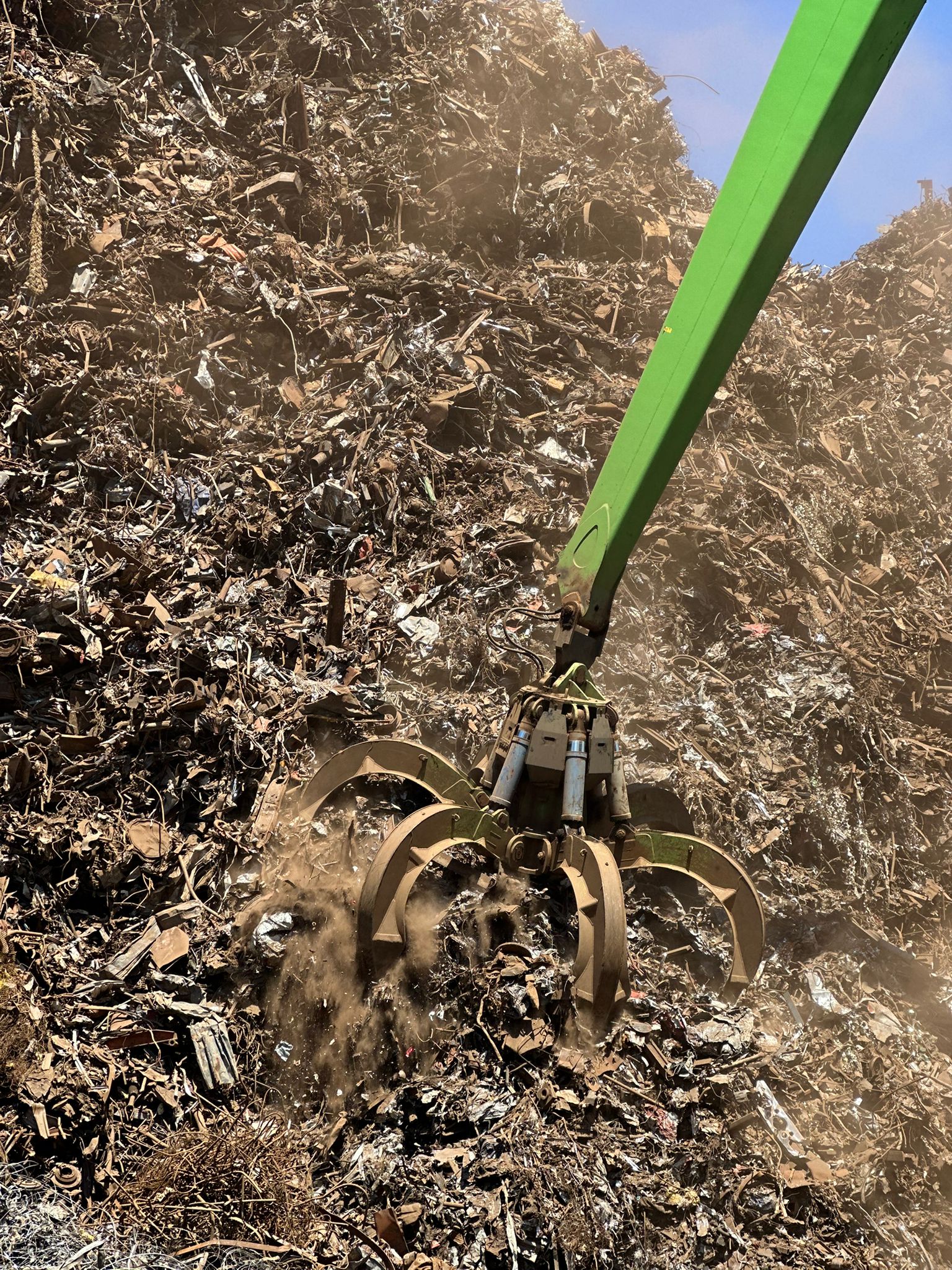Hydraulic vs Mechanical Grabs For Bulk Terminals
In bulk terminal operations, every second of the loading and unloading cycle directly influences profitability. The grab hanging from the crane is more than just an accessory, it is the primary tool that determines how efficiently materials move from ship to shore or yard to vessel. It takes more than just matching capacity to crane tonnage to select the appropriate grab type. It entails striking a balance between accuracy, robustness, upkeep plan, and compatibility with the terminal’s current infrastructure.
Modern port operations are dominated by two grab families: mechanical rope grabs and electro hydraulic grabs. Regarding performance, lifecycle cost, and operational flexibility, each has pros and cons of its own. For terminal operators, equipment managers, and procurement teams looking to lower costs per ton while still adhering to safety and environmental regulations, it is imperative that they comprehend these distinctions.
In this article we will explore how each grab type works, where it performs best, and how to align your choice with the realities of your crane systems, material profile, and long-term operating goals.
Industry Context And Decision Framework
Bulk terminals are complex, high-throughput environments where equipment performance shapes the economics of every vessel call. The difference between unloading a vessel in 36 hours instead of 48 can represent not only significant cost savings but also better berth availability, higher customer satisfaction, and more competitive service rates. Within this ecosystem, the grab’s design and operating principle directly affect how quickly and safely cargo moves.
How Bulk Terminals Create Value
At the most basic level, a terminal earns revenue by transferring cargo efficiently while keeping operating costs and downtime low. Cycle time -the interval from grab closure to the next closure- is a key driver. Shorter cycle times mean more tons per hour, which shortens vessel turnaround and maximizes berth usage. The right grab type increases fill factor, minimizes spillage, and improves crane utilization, all of which feed directly into a lower cost per ton handled.
Where Grab Choice Fits In The Equipment Stack
Grabs work as part of a coordinated chain that includes cranes, hoppers, conveyors, and dust suppression systems. A mismatch in grab type and crane capability can lead to underutilized lifting capacity, higher energy costs, or avoidable wear on ropes and mechanical parts. Conversely a well-matched grab enhances the entire operation, allowing smoother handoffs to hoppers, better flow control for conveyors, and reduced environmental impact. This makes grab selection a strategic decision, not just a technical one.
Understanding Core Mechanisms Of Each Grab Type
Although loading and unloading bulk materials is the purpose of both mechanical and electrohydraulic grabs, their methods for producing force, managing motion, and interacting with cranes differ greatly. Speed, upkeep, and compatibility with your current lifting systems are all directly impacted by these variations.
Electro Hydraulic Grabs Explained
Electro hydraulic grabs use an integrated hydraulic system powered by an electric motor. Regardless of the weight or density of the load, the shells are precisely opened and closed with constant force thanks to hydraulic cylinders. Through an electric connection or, in certain models, an onboard generator, power can be delivered straight from the crane. This configuration enables precise placement and controlled material release, which is especially advantageous for valuable or dust-sensitive cargo.
Radio Remote Control Hydraulic Grabs Explained
A subcategory of hydraulic grabs, radio remote control (RRC) grabs are self-contained units powered by an onboard battery system. They eliminate the need for electrical cables from the crane, making them ideal for operations where quick hook changes and minimal crane modifications are required. RRC grabs also offer smooth, low-shock opening that reduces sway; a major advantage for trimming cargo in confined spaces or when working at height.
Mechanical Rope Grabs Explained
Mechanical grabs, also known as rope grabs, rely on the crane’s hoist ropes for both closing and opening. Two rope grabs use one rope for closing and another for opening, while four rope grabs employ two ropes for each action, offering better control and reliability. Closing force is generated through the crane’s hoisting action rather than a hydraulic system, making these grabs simpler in design, lighter in maintenance demands, and better suited for cranes without electrical capability. The Mechanical Orange Peel Grab, available in both 2-roped and 4-roped configurations, is ideal for handling bulky, irregular materials such as scrap metal, waste, or coal with high efficiency. The Mechanical Clamshell Grab, also offered in 2-roped and 4-roped versions, excels in loading and unloading fine or granular bulk materials like sand, gravel, and grain, making it a versatile choice for port and construction operations.
Performance Considerations In Bulk Terminal Equipment
The choice between electro hydraulic and mechanical grabs has a measurable impact on throughput, material handling quality, and energy efficiency. Each grab type offers unique performance advantages depending on the cargo profile, crane configuration, and operational priorities.
Cycle Time And Throughput
Hydraulic grabs, whether cable-fed or radio remote controlled, provide consistent closing force and quick shell actuation, which can reduce the time per grab cycle. This is especially valuable when unloading dense cargo where full bucket volume is achievable with every lift. Mechanical grabs, while generally slightly slower in closing, can excel in continuous operations where crane operators are highly skilled at maximizing fill factor and minimizing idle time between cycles.
Material Compatibility And Spillage Control
Electro hydraulic grabs offer precise control over opening, making them ideal for materials that require careful discharge -such as grain, fertilizers, or fine aggregates- where spillage or dust generation can be costly. Mechanical grabs can handle a wide range of cargo, including heavy ores, coal, and scrap, but lack the fine-metering capability of hydraulics, which can lead to higher spillage rates with certain cargoes.
Energy Efficiency And Power Realities
Hydraulic grabs require electrical power, which either comes from the crane’s onboard systems or from an internal battery in RRC models. While this can slightly increase operating costs, it delivers consistent performance regardless of rope tension. Mechanical grabs depend solely on the crane’s mechanical work, avoiding electrical consumption altogether. However, they can place higher wear loads on ropes and sheaves, which may indirectly impact overall crane energy efficiency over time.
Maintenance Reliability And Total Cost
Over the lifetime of a grab, maintenance requirements and downtime have as much impact on operational costs as the initial purchase price. Understanding the typical service needs of each grab type helps terminals plan resources, stock critical spares, and avoid costly disruptions.
Wear Parts And Service Intervals
Electro hydraulic grabs have more complex systems, including hydraulic cylinders, hoses, seals, and electrical components. These parts require periodic inspection and replacement to prevent leaks or performance loss. Radio remote control models also involve battery maintenance, with charging cycles and eventual battery replacement as part of the service schedule. Mechanical grabs, in contrast, have fewer components -primarily pins, bushings, ropes, and sheaves- which simplifies maintenance but may require more frequent rope inspections due to load cycles.
Failure Modes And Downtime Risk
Hydraulic systems are susceptible to hose failures, valve blockages, or motor faults, which can halt operations until repairs are made. While these failures may be less frequent if well maintained, they often require specialized technicians and spare parts. Mechanical grabs tend to fail in more predictable ways, such as rope fraying or latch wear, which can be addressed quickly on-site with readily available materials. However, severe mechanical damage (e.g., bent arms) can still cause extended downtime.
Spare Parts And Global Support
The availability of replacement parts and service expertise should guide procurement decisions. Guven Grab, for example, standardizes critical hydraulic and mechanical components and maintains a global parts supply network, allowing most repairs to be carried out within 24 hours in major port locations. This reduces mean time to repair (MTTR) and keeps equipment in service longer without costly idle cranes.
Safety Control And Compliance
In bulk terminal environments, safety is inseparable from productivity. A grab that handles material quickly but compromises stability, operator control, or environmental compliance will ultimately cost more in incidents and regulatory penalties than it saves in speed.
Load Stability And Swing Control
Electro hydraulic grabs, particularly radio remote control models, provide smoother and more predictable opening actions. This reduces sudden weight shifts and limits load sway, which is crucial when working over vessel hatches, near quay edges, or around other equipment. Mechanical grabs rely on the crane operator’s skill to manage load stability, and while experienced operators can achieve excellent control, the margin for error is higher, especially in challenging weather conditions.
Operator Ergonomics And Training
Hydraulic grabs simplify operation through push-button controls, allowing less experienced operators to achieve consistent performance with minimal training. Mechanical grabs require a more nuanced handling of hoist and closing ropes, which can lengthen training periods but offers a level of operational “feel” that some seasoned crane drivers prefer.
Standards And Documentation
Both hydraulic and mechanical grabs should comply with relevant lifting equipment standards, such as ISO, FEM, and local port authority regulations. A professional supplier will provide full load test certificates, detailed maintenance manuals, and safety documentation. This ensures not only compliance but also smoother audits and easier integration into port safety management systems.
Selection Scenarios In Port Operations
No single grab type is universally superior. The right choice depends on the terminal’s crane setup, material mix, and operational objectives. Understanding when each grab family excels allows operators to match equipment to the realities of their working environment.
When To Choose Hydraulic Grabs
Electro hydraulic and radio remote control hydraulic grabs are best suited for operations where precision and material control are critical. Grain terminals, fertilizer facilities, and ports handling high-value or dust-sensitive cargo benefit from the controlled opening and reduced sway these grabs offer. RRC models are particularly advantageous in multi-purpose terminals where rapid hook changes are needed without installing additional electrical infrastructure on the crane.
When Mechanical Grabs Still Win
Two rope or four rope mechanical grabs remain the optimal choice when cranes lack electrical provision or when operational simplicity and ruggedness outweigh the need for fine material metering. They excel in handling heavy ores, coal, scrap, and logs cargoes where spillage control is less critical and the priority is maximum volume per cycle at the lowest possible capital cost.
Hybrid Fleets And Transition Strategies
Many terminals maintain a mix of hydraulic and mechanical grabs to cover seasonal or commodity-specific demands. For example, a port might deploy hydraulic grabs for grain season to minimize dust emissions and mechanical grabs for year-round coal discharge. This hybrid approach allows operators to adapt quickly to changing vessel schedules without over-investing in one grab type.
Case Applications With Guven Grab
Real-world scenarios demonstrate how the right grab choice delivers measurable operational gains. These examples highlight how Guven Grab models are deployed in diverse port environments to solve specific handling challenges.
Panamax Coal Discharge With Electro Hydraulic Clamshell
At a high-capacity coal terminal, Guven Grab’s electro hydraulic clamshells integrate with cranes supplying direct electrical power. The result is faster trimming of vessel holds, reduced spillage into the water, and smoother material flow into hoppers. The consistent closing force ensures optimal fill factor in every cycle, even with dense, abrasive cargo.
Handymax Grain Operations With Radio Remote Control Grab
In a mid-sized grain terminal, radio remote control (RRC) grabs allow operators to hook on and start work without connecting external power lines. The smooth, low-shock opening minimizes dust plumes and material loss during discharge. The reduced sway is especially valuable when working deep inside vessel holds where visibility is limited.
Timber And Scrap Handling With Mechanical Grapples
For timber yards and scrap metal terminals, Guven Grab’s mechanical rope grapples provide unmatched durability under rough handling. Simple, rope-driven operation means minimal downtime and rapid on-site repairs, keeping operations running even in harsh outdoor environments where hydraulic components would be more exposed to damage.
Procurement And Return On Investment
Choosing a grab is not only an engineering decision, it is a financial one that affects both short-term budgets and long-term operating costs. A well-informed procurement strategy should link technical requirements to measurable economic outcomes.
Capex Opex And Payback
Electro hydraulic grabs typically involve a higher initial purchase cost than mechanical grabs due to their integrated hydraulic systems and electrical components. However, they can deliver lower operating costs in certain cargo profiles by reducing spillage, minimizing damage to infrastructure, and shortening vessel turnaround times. Mechanical grabs offer lower capital expenditure and simpler maintenance, which can be attractive for terminals prioritizing immediate cost control. The payback period will vary depending on cargo type, vessel call frequency, and operational efficiency gains.
Retrofit And Crane Interface Pathways
Upgrading to hydraulic grabs may require electrical modifications to the crane or the adoption of radio remote control units to avoid such changes. In contrast, mechanical grabs can be used immediately with compatible rope cranes, making them faster to deploy in retrofit scenarios. Guven Grab offers interface kits, quick couplers, and advisory support to minimize downtime during installation or changeovers.
Risk And Sensitivity Inputs
Market volatility, cargo mix changes, and seasonal demand fluctuations should be factored into procurement planning. For example, a terminal heavily dependent on agricultural exports may see significant value in a hydraulic grab during harvest season but rely on mechanical grabs for other cargo the rest of the year. Building in this operational flexibility can protect ROI under variable market conditions.
Specification Checklist For Engineers
A well-prepared technical specification shortens procurement cycles, prevents costly mismatches, and ensures the grab integrates seamlessly into existing operations. Engineers should define these parameters early in the purchasing process.
Crane Interface And Power Provision
Confirm the crane’s safe working load, reeving configuration, hook block dimensions, and any electrical availability. For electro hydraulic grabs, note the required voltage, amperage, and connector type. For radio remote control grabs, verify battery autonomy requirements and charging logistics.
Capacity Shell And Material Profile
Match grab volume to the density and flow characteristics of the handled cargo. High-density ores require smaller volumes to stay within SWL, while low-density cargoes like grain benefit from larger shells. Specify shell lip design and sealing systems based on lump size, moisture content, and dust control needs.
Environment And Compliance
Factor in environmental conditions such as salinity, temperature extremes, and humidity, which influence material selection, coatings, and corrosion protection. Ensure the grab design complies with relevant ISO and FEM standards and any local regulations related to port operations, environmental protection, or lifting safety.
Grab Type Comparison Table
| Feature | Electro Hydraulic Grab | Radio Remote Control Hydraulic Grab | Mechanical Rope Grab |
|---|---|---|---|
| Power Source | Electrical power from crane or onboard generator | Internal rechargeable battery | Crane’s hoist ropes (no electrical power) |
| Precision Control | High, with adjustable hydraulic valves | High, with smooth low-shock opening | Moderate, dependent on operator skill |
| Cycle Time | Fast and consistent | Fast, with quick hook changes | Good with skilled operators |
| Material Compatibility | Ideal for fine, dusty, or high-value cargo | Ideal for dusty or precision cargo in multi-use terminals | Best for heavy ores, coal, scrap, logs |
| Maintenance Complexity | Higher (hydraulic components, electrical) | Higher (hydraulic + battery) | Lower (mechanical components only) |
| Downtime Risk | Medium, requires specialized repair | Medium, requires specialized repair | Low to medium, simple field repairs possible |
| Capex | Higher | Higher | Lower |
| Opex | Medium, offset by efficiency gains | Medium, offset by flexibility | Low |
| Crane Modifications | Often needed | None required | None required |
| Best Use Cases | High-volume precision operations with crane power available | Terminals needing quick changeovers without power provision | Rugged, cost-focused operations without electrical capability |
Conclusion
In modern bulk terminals, the choice between electro hydraulic and mechanical grabs is far more than a matter of personal preference. It is a decision that shapes throughput, safety, and operating costs for years to come. Electro hydraulic grabs, including radio remote control models, excel when precision, dust control, and smooth operation are priorities. Mechanical rope grabs remain the workhorse solution for terminals that value simplicity, ruggedness, and minimal upfront investment.
By aligning grab selection with crane capabilities, cargo profiles, and maintenance strategies, operators can maximize cost per ton efficiency and extend equipment life. For terminals with diverse operational demands, a hybrid fleet may provide the best balance of flexibility and performance.
Guven Grab’s global product range and technical expertise allow terminal managers and engineers to select the exact grab model for their application, backed by fast parts supply and support. The result is not just a piece of equipment, but a reliable operational asset that keeps cargo moving and vessels on schedule.
Table of Contents
- Industry Context And Decision Framework
- Understanding Core Mechanisms Of Each Grab Type
- Performance Considerations In Bulk Terminal Equipment
- Maintenance Reliability And Total Cost
- Safety Control And Compliance
- Selection Scenarios In Port Operations
- Case Applications With Guven Grab
- Procurement And Return On Investment
- Specification Checklist For Engineers
- Grab Type Comparison Table
- Conclusion


